
Have you ever observed a couple of Israelis speaking? If you have, chances are that you’ve noticed how Israelis use not only their voice but also their hands, face, and entire body to communicate. Much as in other parts of the Mediterranean Basin (with Italians perhaps being the most famous example), Israel is a place where we speak with a high level of expressivity.
Because we Israelis are so highly expressive, mere words cannot capture all it is we wish to say. For that reason, we draw on the rest of our body to fine-tune our communication. There are many Hebrew hand gestures and body language signals we use to give added hints, embellishments, and emphasis.
This may seem daunting at first. After all, some gestures will be completely foreign to the non-native while others may simply have a different meaning than they do in other places.
But put your worries to rest! As always, HebrewPod101 is here to help.
In today’s lesson, we’re going to look at the top 32 gestures and bodily expressions you’re likely to encounter in Israel. We’ve broken these down into categories, including:
- greetings and farewells
- gestures for everyday conversation
- gestures used during travel
- gestures from the religious world
Have fun with these. Try looking out for them the next time you watch an Israeli TV show or movie, or in real life as you observe conversations from a park bench or the corner of a café.
 Table of Contents
Table of Contents
- Gestures Used to Greet and Take Leave
- Gestures Used in Everyday Conversation
- Gestures Used on the Road / During Travel
- Gestures from the Religious World
- Let HebrewPod101 Point You in the Right Direction
1. Gestures Used to Greet and Take Leave

There’s no better place to start than with the basics. Let’s kick things off with a look at a few common Israeli gestures you may see used in greetings or farewells.
If you’ve ever traveled, you’re likely to have noticed that there are myriad ways people greet one another from one culture to the next. That’s why it’s a good idea to familiarize yourself with the cultural norms of Israel in this regard. It will help you fit in while avoiding awkward moments—or even unintentional headbutts—due to poorly coordinated greetings.
- Handshake

This one seems to be more or less universal. Israelis use it in more formal situations, rather than with friends or family.
- Handclap with a half-hug
Male Israelis on familiar terms typically greet one another with an open handclap that involves the thumbs interlocking, followed by a half-hug (i.e. one arm wrapping around the other person’s back).
- Slap on the back
Another, simpler way of greeting, also typically between men, is to simply clap someone on the back, either from the side or head-on by passing the arm over and behind the other person’s shoulder.
- Kisses on the cheek
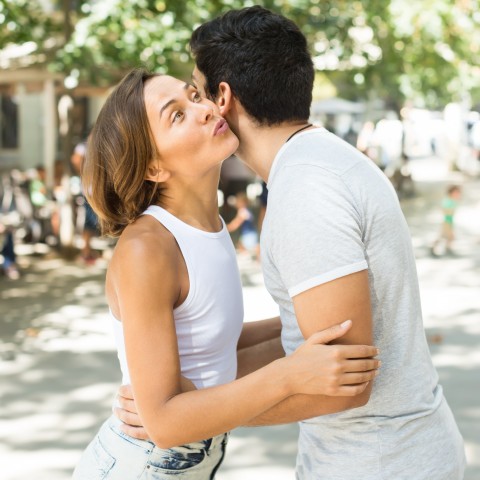
This one is more common between men and women or between two women, but some men also greet other men this way. Israelis seem to be more comfortable with their physicality—and perhaps their sexuality—than Westerners, so it’s not uncommon for men to kiss one another on the cheek. Note that the number of times one kisses varies, but the most common variant is once per cheek. You might also see twice per cheek (alternating back and forth) or a triple kiss (also alternating back and forth).
*Note that Orthodox Jews are forbidden from touching members of the opposite sex, apart from their spouses, parents, and children. For this reason, you may find yourself in a situation where no physical contact is involved when greeting someone or taking your leave. See more here.
2. Gestures Used in Everyday Conversation
The following nonverbal Israeli communication cues are the ones you’re most likely to encounter in day-to-day situations such as meeting a friend, negotiating a purchase, or asking for directions or advice. Where possible, we’ve included visual media along with a description of the gesture and its meaning to help you identify and reproduce it. Let’s plunge right in!
- Raised palm with fingers gathered together into a point
This gesture, almost ubiquitous in Israel, means “wait” or “just a moment.” While it’s considered an offensive gesture in other cultures, it’s perfectly acceptable in Israel—so don’t be taken aback when an elderly shopkeeper shoves her fingers in your face!
- An extended finger pointing at nothing in particular
This one is used in Israel to show that you’re trying to teach someone something. Politicians, unsurprisingly, use it quite often.
- Index finger touching the face beneath the eye
This one is a way of saying, “Are you kidding me?” or “I don’t believe you.” In other words, it expresses incredulity over what the other person has just said.
- Creating a circle with the thumb and index finger, with the other fingers extended
This indicates approval, satisfaction, or simply that something is great. Note that the gesture is often made with the extended fingers hanging downward, whereas in most Western countries, these fingers would be held up.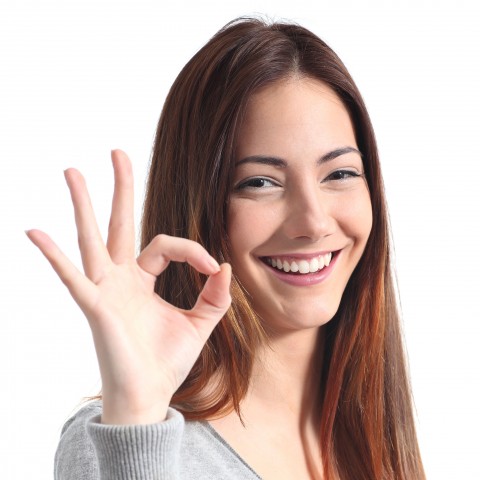
- Beckoning with both palms up
This gesture, one of politicians’ go-to moves, is a way of inviting the other person to meet you halfway, collaborate, etc.
(Photo: Reuters / Ronen Zvulun)
- Shrugging with arms extending forward at the elbow, palms up
This iconic Israeli gesture, slightly different from a typical American shrug, can mean anything from “duh” to “no idea” to “What can you do?” Note that Israelis also “shrug” with their lips by pulling the corners down sharply. You can even combine these two gestures for an extra-emphatic shrug!
- Two thumbs up
This one isn’t uniquely Israeli, but it is one we use quite often. As in most places in the world, this is a way of showing approval, joy, or pride.
- Pointing an index finger directly at someone and moving it in a back and forth motion
While this might seem to have some sort of offensive connotation, in Israel, it’s just a way to say “good job,” “you did it,” etc.
- Making a V shape with the index and middle fingers
Made famous by Winston Churchill, this is the international sign for victory. It’s common to see it used by soldiers.
- Pressing palms flat together and inclining them forward toward someone
Sometimes referred to as the Namaste gesture, this one is also fairly universal and simply means “thanks.”
- Moving an open palm toward another person’s chest
This one, which may be unfamiliar to many non-natives, is a way of saying either “good luck” or “congratulations” in Israel. It comes from the khamsah good luck symbol.
- Up-turned palm moving back and forth in a slightly swaying motion on the vertical axis
A prime example of uniquely Israeli hand gestures, this one can be used either to ask a question or to answer one. In the former case, it would be equivalent to asking how someone or something is getting along or asking if everything is okay. As an answer, it means “so-so.”
- Fingers and thumb pressed together near the lips, moving in a circle
This one is pretty straightforward. It essentially represents sealing one’s lips to keep a secret.
- Air quotes
This one is fairly universal, as well. Air quotes in Israel typically suggest dubiousness or even sarcasm.
(Picture by ‘Dronthego’ under CC BY-SA 4.0)
- Both index fingers extended up and touching each other
In Israel, this one is used to indicate a close relationship or friendship, something akin to “thick as thieves” or “birds of a feather flock together.”
- Hand hanging down with fingers upward, as if holding something, as fingers are waved up and down
This somewhat sapian-looking gesture is used to express surprise, disbelief, shock, etc.
3. Gestures Used on the Road / During Travel
Israelis are known for using a distinct set of gestures on the road. This makes sense, considering that you may be able to see another driver or pedestrian but not hear them—in this context, gestures enable communication where words might not. That, and the fact that we just like using our hands! Here are the essential hand gestures you need for traveling in Israel.
- Pointing an index finger down the road

Another interesting variant between cultures is how one hails a bus, taxi, or other transport vehicle. In Israel, it’s customary to point down the road in the direction of traffic to indicate that you wish for the vehicle to pick you up.
- Thumb extended upward
This one should be nothing new to most people. As in the U.S. and elsewhere, a thumb extended upward and held out toward the road is a common way to signal to vehicles that you’re looking to hitch a ride. Be sure that you’re hitchhiking in a safe area!
- Palm down and fingers moving up in unison
Though not a common thing for Israelis to do, this gesture is used to signal to another vehicle to advance. The fingers sort of flick forward in this one, as if brushing away a fly.
- Palm extended forward, facing upward
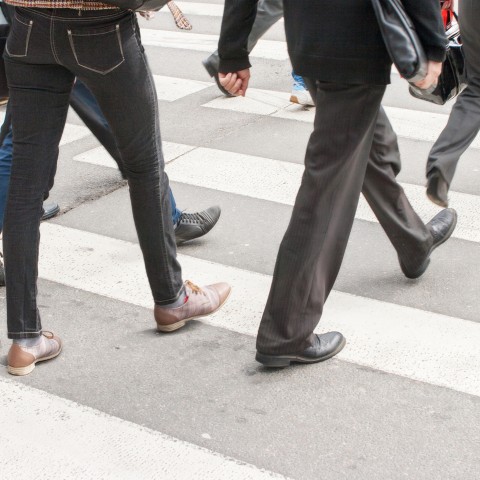
This gesture is similar to the previous one, but is used to signal for a pedestrian to cross in front of a vehicle.
4. Gestures from the Religious World
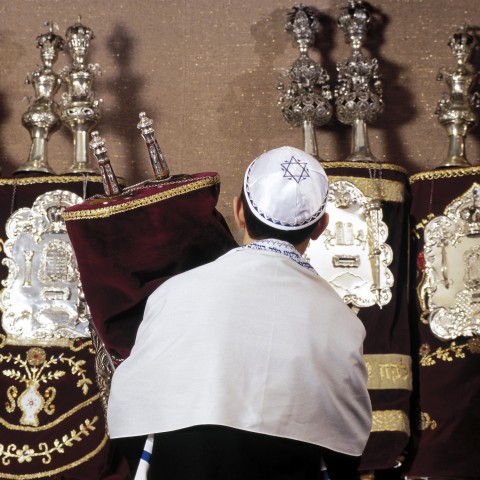
Finally, let’s have a look at the rich contribution the religious world has made to Hebrew’s nonverbal lexicon. Obviously, some of these will only be relevant to religious people, though others have snuck in as crossover entries into the general repertoire of modern Israeli expression.
A- At the synagogue

- Taking three steps backward, then three steps forward
This movement is used during devotional services to initiate the silent prayer known as the עמידה (‘Amidah), which literally means “standing.” It represents that one is creating and delineating a sacred space.
- Breast-beating
This one, also used in Catholic prayer, symbolizes an air of repentance for past transgressions. Breast-beating typically happens during silent prayer and is particularly prominent on Yom Kippur, the Day of Atonement.
- Raising a finger and pointing to the Torah
This gesture represents recognition of the Torah as the source of Jewish law and morality. Depending on local customs, the pinky or index finger or the fringe of a tallit is used. It’s part of the Torah reading service and something you’ll observe the entire congregation doing when the Torah is returned to the ark in which it is housed. See the YouTube clip below for an example.
- Spock hand gesture
While some people may recognize this gesture as the Star Trek Vulcan salutation popularized by the character Spock, actor Leonard Nemoy actually pilfered this one from his memories of attending synagogue as a youth. In synagogue, during ברכת כהנים (Brikat Cohanim), or “the Priests’ Blessing,” the priests bless the congregation by splitting the fingers of each hand between the middle and ring fingers, pressing the thumbs and fingers of both hands together, and outstretching them over the congregation. A representation of this gesture can often be found on graves of Cohanim.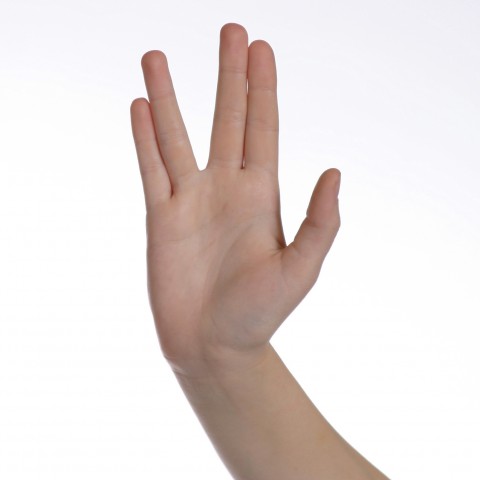
- Shuckling
This word, from Yiddish rather than Hebrew, is used to describe a motion where people sway back and forth to intensify focus on prayers or study. You can see some examples in the video below.
B- At home
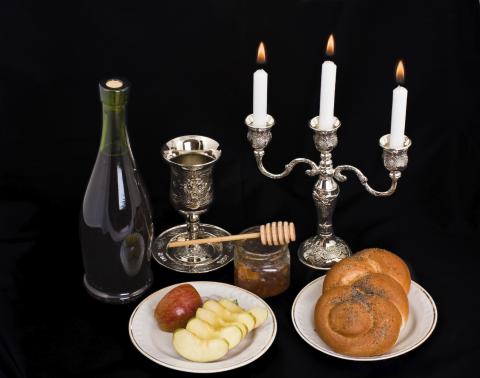
- Making a breaststroke movement three times, then covering the eyes
This is performed when lighting the ceremonial candles for Shabbat or holidays. You can see what it looks like in the video below.
- Placing both hands on a child’s head
This is another gesture that goes along with Shabbat. Specifically, it’s used when giving children the traditional Sabbath blessing after lighting the candles.
- Dipping a thumb down and then up
To end on a somewhat more humorous note, this gesture comes from the study halls, where issues of הלכה (Halakhah), or Jewish law, have always been hotly debated with much gusto. The gesture is a way of making a point in an argument.
5. Let HebrewPod101 Point You in the Right Direction
We hope you found today’s lesson on body language in Israel a fun change of pace. As you can see, Hebrew is much more than just a language; it’s an entire culture, replete with its own nonverbal communication. While most Hebrew study programs focus solely on grammar, vocabulary, and pronunciation, we at HebrewPod101 go the extra mile and offer you plenty of supplementary lessons covering all aspects of Israeli and Jewish culture.
It goes without saying that part of the pleasure of learning a new language is seeing how it operates in context. Observing a single conversation between Israelis will quickly convince you that nonverbal communication is perhaps even more important in Hebrew than in some other languages. It’s certainly an integral part of how we communicate, so it’s a great idea to add some of these gestures to your repertoire.
Have you seen Israelis making any gestures you couldn’t figure out? Are you wondering if Israelis have a particular gesture for a specific idea, emotion, or situation that we didn’t cover? We’d love to hear any questions or comments you may have. Your feedback helps us to continually improve our lessons and make sure you get all the help and support you need as you study the Hebrew language.
Until next time, shalom!













